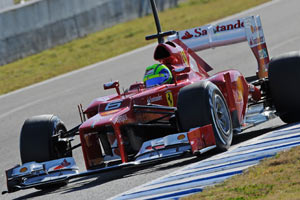Stalling has nothing to do with airspeed, so I don't know what thats about, at least not from that little excerpt.
Is the car really lacking front end grip in the fast corners though? Unfortunately I did not get to watch malaysia... In australia, their issue was low speed traction. Though they seemed to be understeering at times. Melbourne would not show true high speed performance anyways... damnit I really missed out.
in any case:
xpensive wrote:Gary Anderson in BBC:
"It backs up my theory that there is a problem with the front end of the Ferrari, that it cannot cope with lateral forces in corners because the front-tyre contact patch is moving around."
Not that I hold much admiration for the man, but I think he's basically saying the same thing as I tried to convey a few pages back, that the F2012 pull-rod geometry induces xcessive loads on all of the suspension's components, wishbones, joints and rockers alike, something which causes load-dependent deflections and as a result camber changes.
Yes, pullrod increases loads on structures. This is well known. However, this should not be a problem. If their engineers know what they are doing, (and I'm going to assume that at least on that level they do) they could easily have compensated for it in the design of the wishbones. You can end up with the same stiffness and the same deflection measured at the uprights, at the expense of slightly heavier upper wishbones.
it makes more sense for it to be a setup problem than a structural design problem, because its a pretty basic stuff. Also "load-dependent deflection" is a bit of an odd thing to say because all deflections are the result of load and generally vary with load, though how they react to load as it increases can change, particularly outside of the linear range.

